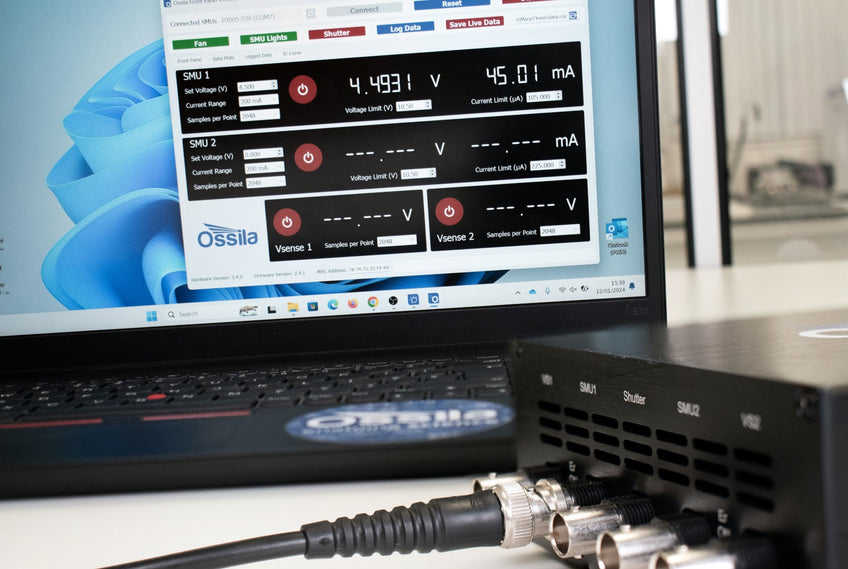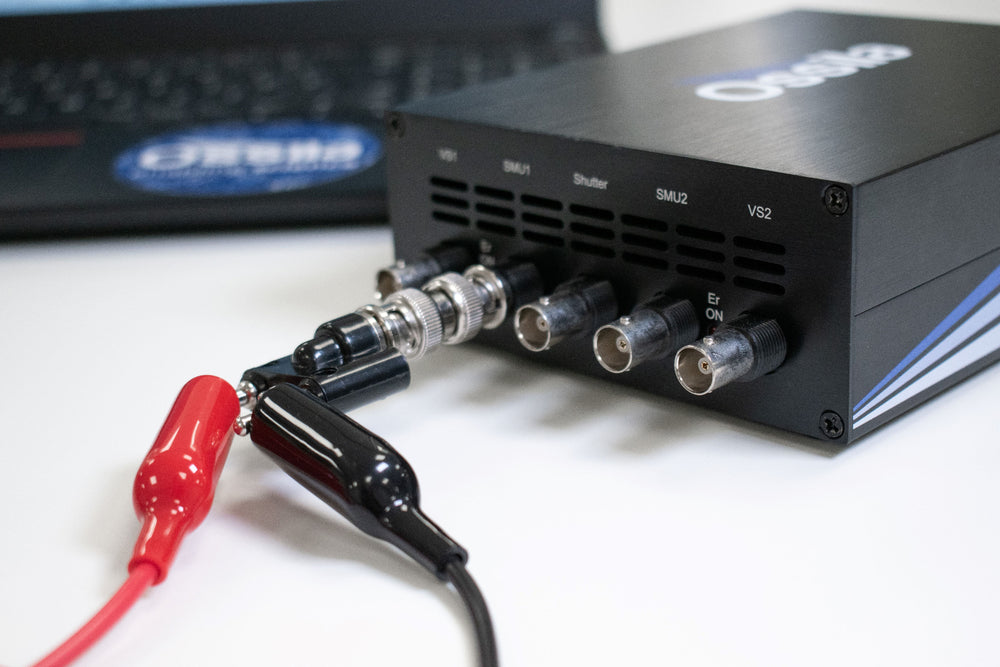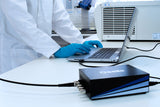What is an SMU? | Source Measure Unit Definition

A source measure unit (also known as a source meter or SMU) is a tool that can power your electronics and measure their performance at the same time. Like a Swiss Army Knife, it combines the capabilities of several instruments into one compact package, saving bench space, time, and programming issues. But what exactly does it do?
Each SMU channel can:
- Source. Precisely generate and control either voltage or current.
- Measure. Measure voltage and current at the same time.
SMUs can perform the role of multiple components in one synchronized unit. They can act as an ammeter, a voltmeter, and a power source. For example, the Ossila Source Measure Unit can source voltage, while simultaneously measuring current and voltage.

Applications of a Source Measure Unit
Source measure units can measure and characterize many electronic devices and material properties. Some applications include:
- LED and OLED characterization
- Solar cell I-V curves and stability measurements
- Measuring transistor properties, such as current gain
- Measuring battery discharge rates (V Sense channels only)
- Testing electronics components
- Testing materials by measuring conductivity, leakage currents, and other properties
Why Use A Source Measure Unit?
Easy To Control
SMUs are easily programmable and user-friendly. This streamlines the measurement process, compared to managing separate inputs and outputs.
Fast Measurement Speed and Increased Accuracy

Integrating multiple functions into one system reduces measurement time. Combined with minimal signal loss and measurement errors, this leads to more accurate measurements.
Compact and Budget-Friendly
With fewer systems involved, choosing an SMU saves money and lab space.
Handling Negative Voltages
Some electronic devices need to be tested under both positive and negative voltages. Source measure units can do this easily, without resetting the system or rearranging the setup.
Multiple Channels
The multiple channels in an SMU allow complex measurements to be taken.
Multiple Measurements
SMUs can take multiple measurements in rapid succession. This is great for obtaining quick snapshots of devices (e.g. I-V curves) or for measuring dynamic behavior.
Source Measure Unit

Can You Use Individual Components Instead?
You could potentially build a system that can do what a source measure unit can do, with moderate accuracy, using individual components. To do this, you would need to combine several individual components:
- A benchtop power supply to output voltage
- Several good quality multimeters
- One to measure voltage
- One to measure the current
- An external data control center, such as a computer, to coordinate measurement
However, if you are combining equipment in this way, there are significant drawbacks to consider:
- It is difficult to programme
- The cost of individual components can add up quickly
- You must rearrange the system to measure both positive and negative voltages
- Human error can be a big issue
- Combining multiple components introduces a delay
Source Measure Unitscombine these components into one convenient unit. This allows you to conduct different measurements for different samples using only one piece of equipment
So, What is a Source Measure Unit?
Overall, a source measure unit is a multi-talented tool for electronics, combining a power source and measurement functions in one. An SMU is a useful addition to any electrical characterization lab.
Source Measure Unit

Learn More
 Example Uses For A Source Measure Unit
Example Uses For A Source Measure Unit
Source measure units (also known as source meters or SMUs) are versatile tools widely used in electronic testing and characterization. This article explores the practical applications of SMUs.
Read more... When To Use A Source Measure Unit
When To Use A Source Measure Unit
Using an integrated Source Measure Unit (also known as SMU or source meter) offers numerous advantages over assembling separate components. This article highlights the benefits of using an SMU, including speed, synchronization, programmability, cost-effectiveness, the ability to handle negative voltages, and its superiority over traditional multimeters and power supplies. Discover how an SMU can enhance efficiency and accuracy in various applications.
Read more...